AI at Work
What is Blog SEO? The Complete Guide to Optimizing Your Blogs for Search

Ashwini Pai · Senior Copywriter
May 21st, 2025 · 14 min read

While generative AI and AI overviews are playing an increasing role in search, SEO is still crucial to content marketing, and blogs play a key role in both. In fact, 56% of marketers hail blogging as their most effective content strategy. To maximize this effectiveness, many marketers prioritize optimizing their blogs for search engines, making blog SEO a critical component of successful content marketing strategies.
Understanding how to properly implement blog SEO can undoubtedly impact your content's performance. In this post, we’ll go in-depth on blog SEO, so you’ll come away with a better understanding, as well as how to leverage it for your website.

What is blog SEO?
Blog SEO is the process of optimizing blogs to rank higher in search engine results. It involves techniques such as keyword research, on-page optimization, technical SEO, and link-building. In this post, we will focus mainly on the content and keyword aspects of blog SEO.
Blogging helps with SEO in many ways, including:
Helping target more keywords to grow organic traffic cost-effectively
Offering an accessible way to earn backlinks and showcase credibility to improve rankings
Enabling internal linking to help search engines better understand a site, influencing rankings and user experience
Keeping your site’s content updated and fresh, signaling that it is active and encouraging more frequent indexing (freshness implies both creating new content and updating older pages)
How to optimize your blogs for search
Blog SEO, a structured and an on-going process supporting long-term SEO success, follows these steps:
Keyword research
Blog SEO begins with understanding what your target audience is searching for, and keyword research is the standard first order of business to find those key terms, which allows you to align content with actual user queries. It also helps prioritize topics with high search demand.
Primary keywords
Primary keywords are chosen keeping certain factors and attributes in mind such as search volume (high search volume implies greater traffic potential), keyword difficulty (keywords with moderate to low difficulty have a realistic chance to rank), and search intent (informational, navigational, commercial, transactional), which is critical to match.
The best practice for SEO is to optimize every blog post around one primary keyword so that Google and other search engines clearly understand that your blog is about that topic. Often, new blogs tend to focus on one long-tail primary keyword as long tail terms are less competitive and hence easier to rank for.
Secondary keywords
Secondary keywords support the primary keyword and help capture related searches. These terms are the variations of the primary keyword, long-tail keywords, and related questions and phrases.
Competitor analysis
Studying competitors’ keyword strategies is equally important as it helps identify the key terms driving traffic to competitor sites, topics they’ve missed out on or haven’t fully covered, and keywords that are too competitive to rank for. This effort also helps brands better understand user intent and the type of content Google rewards.
Assessing competitors’ blogs, such as how they structure content, the types of posts they’ve published, and their internal and external linking strategies, is integral to the process. The findings can then be implemented, such as targeting similar keywords with better, more in-depth content, and leveraging long-tail variations to show up for related searches.
AI for instant keyword research
Keyword research is a core skill in SEO, content marketing, and paid advertising, and there are established tools to find comprehensive insights into industry-related and competitor key terms. That said, not all bloggers are keyword specialists and those that engage in it regularly spend significant time on the repetitive yet highly analytical task.
For blog SEO, AI can take over keyword research and competitor research to optimize blogs faster and produce more content efficiently.
Case in point: Typeface users enjoy the benefits of speed and accuracy in this foundational blog SEO activity. Our Web Agent builds conversion-focused content with SEO optimization and competitive insights.
Empowering marketers to kickstart blogs that incorporate SEO best practices from day one, Web Agent streamlines and simplifies high-ranking content creation at scale in the following ways:
Uncovers keyword insights and includes key terms naturally in blogs
Our AI leverages machine learning, natural language processing (NLP), and large datasets to instantly generate a primary and secondary keyword list for specific geographies, along with their difficulty levels, search volumes, and search intent.
You can add your own keywords to curate a list that Web Agent will use while creating blog content. By automating and enhancing keyword discovery this way, you can slash minutes to hours on finding and finalizing high-potential, geo-targeted keywords.
Enables rapid and effective on-page optimization
Web Agent displays URLs of high-traffic pages, allowing you to study their content structures and optimal lengths. Further, it shows People Often Ask questions and relevant and popular FAQs from Reddit and Quora to make content more comprehensive, address real user concerns, and help appear in featured snippets — which are extremely effective in driving more clicks — and AI overviews — to stay visible in AI-driven search results.
Boosts visibility with instant SEO meta tags
Understanding the context of blog posts, web copy, and social media content, Web Agent automatically generates precise, relevant SEO meta tags. Marketers looking to scale their content marketing efforts can leverage our platform to efficiently optimize large volumes of content, enhancing visibility and driving engagement.
Optimize on-page content
Keyword research informs the next step in blog SEO — on-page optimization — which is essential to improve search visibility, content relevance, and user experience. On-page SEO helps search engines understand a page’s context while also ensuring a smooth experience for visitors.
It’s a substantial, if relatively simple, effort encompassing several techniques:
Structuring content into H1, H2 and H3 header tags to enhance user readability and experience, while also improving crawling and indexing by search engines.
Including primary keywords in the title and title tag, H1 tag, and a H2 or H3 tag.
Optimizing blog images with alt texts, descriptive file names, and compressed formats.
Creating a clean, concise, relevant, and keyword-rich URL
Implementing schema markup effectively to give your posts the best shot at ranking in AI-driven search results.
Typeface generates blogs that adhere to an SEO-standard structure, ensuring they are both search-engine-friendly and user-centric. By incorporating primary keywords naturally within key header tags, Typeface optimizes content for relevance and search intent.
Create quality content
Success at blog SEO hinges, to a considerable extent, on how engaging and valuable a post is to its target audience. And that’s a good thing. By now, it is a known fact that social signals are among the most important Google ranking factors, with the search engine prioritizing high-quality, engaging content and user experience gleaned though metrics such as clickthrough rates, time spent on page, and social shares.
A good blog is a combination of substance, language, and multimedia along with user experience factors, like appropriate blog post lengths and readability with headers, bullet points, and generally well-structured content.
Content freshness also deserves attention as a ranking factor. Although this means creating fresh content — which Google favors — updating older pages frequently also signals freshness. Irregularly updated content may not even show up for freshness, which underscores the importance of optimizing existing blog assets.
The different ways to update existing content include optimizing for the right keywords, linking to newer or better resources, removing broken links, adding unique information or multimedia, or improving your content’s accuracy.
Moving on to a related topic — blogging frequency — is another crucial factor to consider. According to HubSpot, companies that publish 16 posts or more each month are more likely to receive nearly four times more traffic than those that publish four times a month.
This volume of content is a lot for most brands. And it involves risk: Attempting to produce so much content with few resources means you’re in danger of publishing poor quality blogs and derailing SEO efforts.
Power quality content at scale with AI
Blog creation is a popular generative AI use case in enterprise marketing. From generating blog outlines and automating keyword research to assisting with on-page optimization and analyzing posts for SEO performance, generative AI marketing platforms like Typeface are helping marketers execute SEO strategies more effectively. Users stand to gain these distinct benefits:
Maintain the blog publishing cadence that helps drive more traffic, improve rankings, and support overall SEO efforts.
Easily update and optimize older blogs, leveraging the value of existing assets to grow traffic.
Create engaging content for target audiences and markets, guided by automatically generated SEO performance scores, boosting time on page and shareability.
Simplify content collaboration with AI-powered workflows that seamlessly glide a post from creation to review, approvals, and publishing, while maintaining a complete audit trail of every status change.
Create an SEO-friendly blog on Typeface
Typeface offers a number of AI SEO templates for blog creation. The “Blog Post” template creates blog posts with or without SEO keywords. The “SEO Blog Post” template generates SEO-focused blogs. “Refine with SEO” helps marketers rapidly optimize an existing blog. Let’s briefly go through how each works to support any SEO strategy.
SEO blog post
Select the SEO Blog post template
Add the topic of your post
Select the target country for your blog post
Select from a pre-defined audience segment or create your own. Also choose your pre-defined dynamic Brand Kit, which auto-validates your content for brand consistency and suggests corrections when needed.
Paste URLs or upload documents of source content to generate content that covers the key topics and statistics you want to include in your post.
Our AI then fetches the primary and secondary keywords, indicating their search volume, keyword difficulty, and search intent. Select the desired keywords and curate further by adding your own.
Generate the blog outline and enhance as needed, using the FAQs, keyword usage and density counter, and competitor outlines displayed on the side.
Generate your SEO blog, note its SEO performance, and consider the suggested improvements to increase the score.

Blog post with keywords
Select the “Blog Post” template
Add post topic and SEO keywords
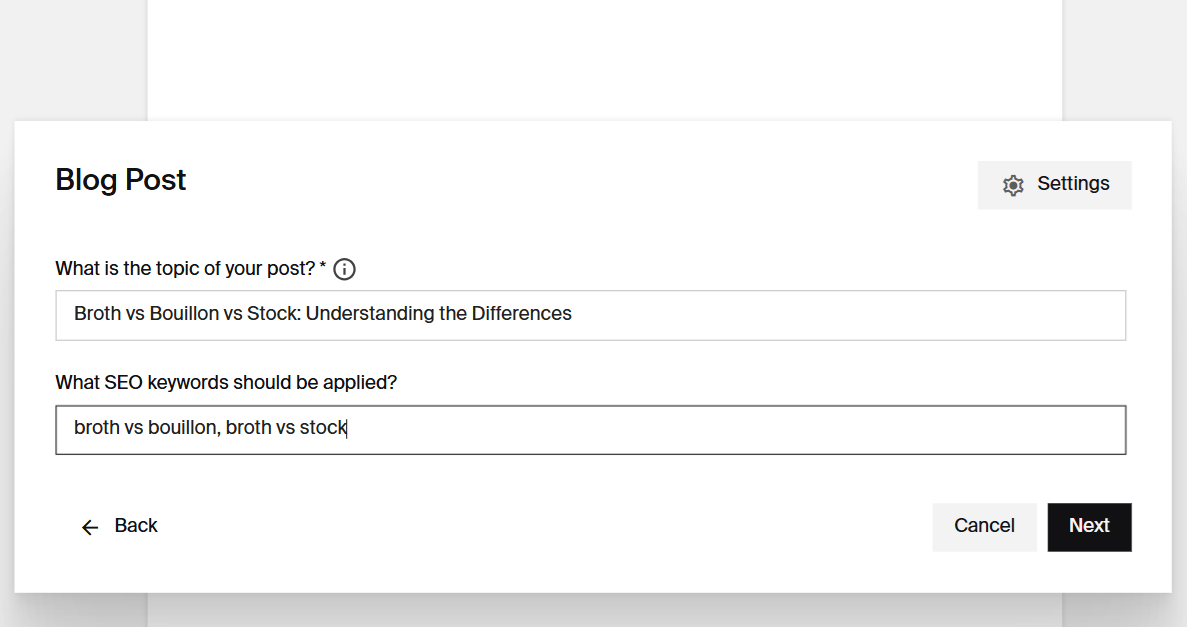
Apply personalization and brand settings
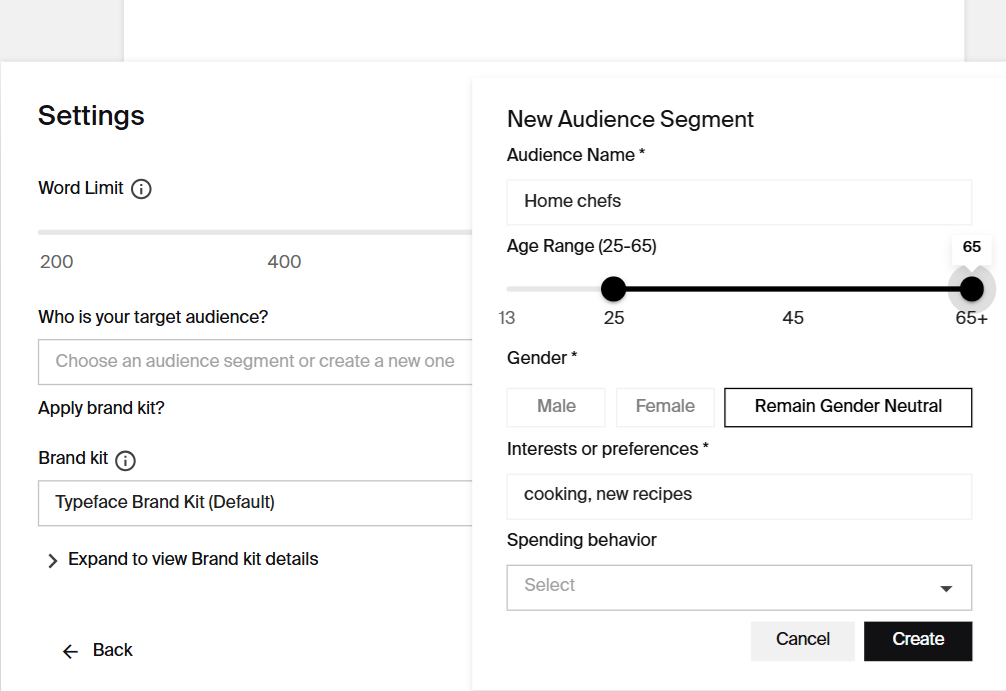
Share reference documents or URLs
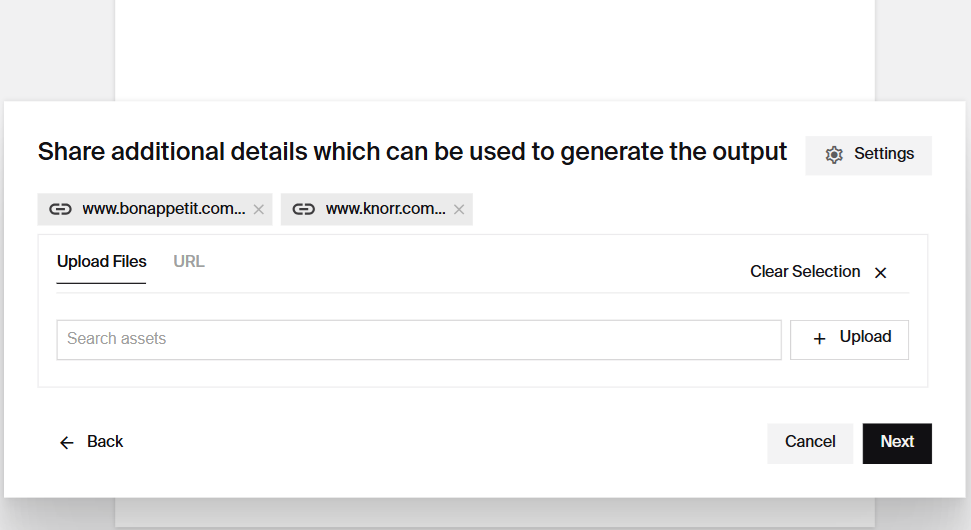
Review and edit the generated blog sections
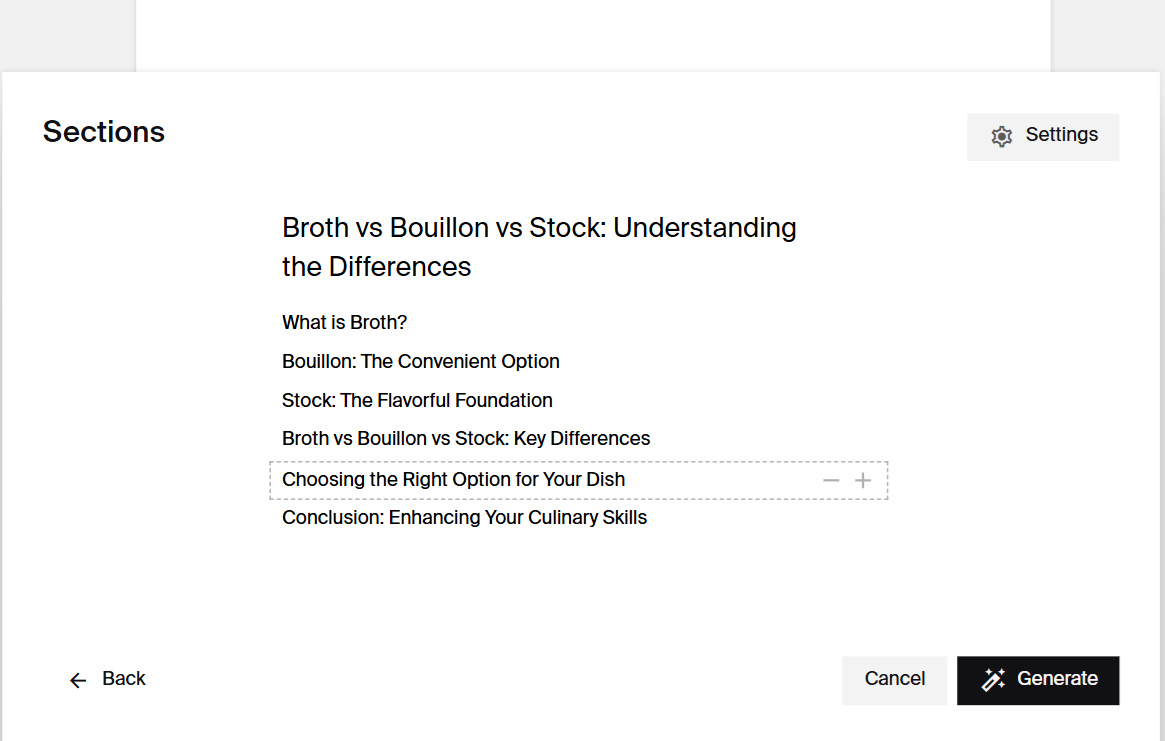
Generate the post

Edit using Generative Refine, our handy AI-powered editing assistant
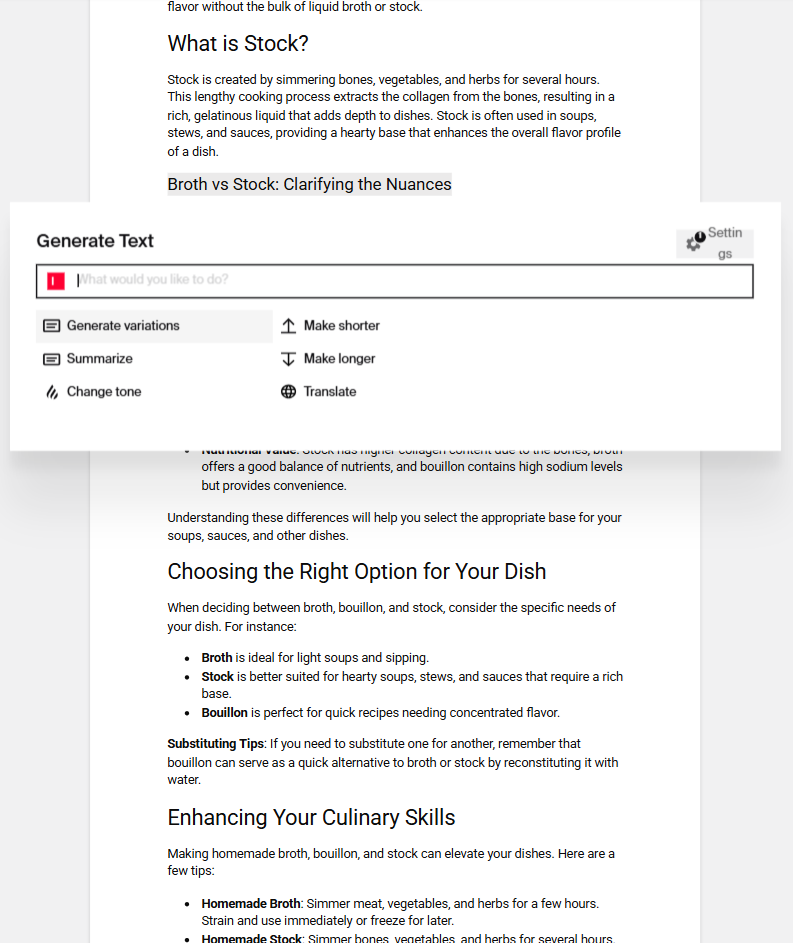
Check how your post performs on engagement and audience and brand alignment. Review suggestions for improvement and incorporate as needed.
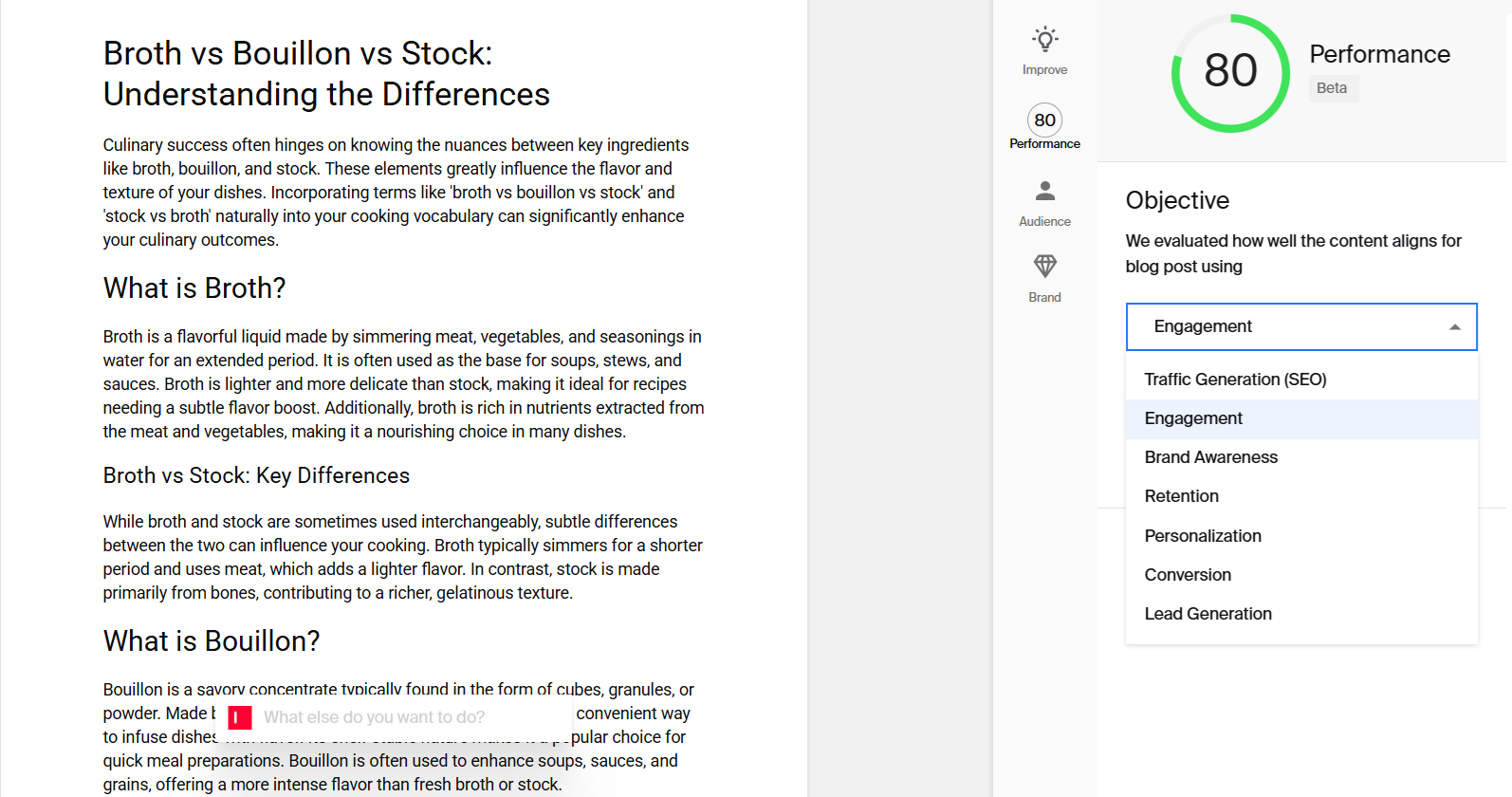
Initiate the review and publishing process
Update an existing blog
Click “Insert Asset”
Add the URL of the blog
Click “Refine with SEO”
Select the target country
Select the keywords
Review the refreshed blog
Enhance its SEO performance with the metrics guiding you
FAQs
Are Blog SEO and SEO blogs the same?
Blog SEO and SEO blogs are two distinct concepts. SEO blogs are created with SEO as the primary goal. They’re often listicles, how-tos, and guides (“How to boost marketing ROI”, “Best job search engines”, “Top 5 places to visit in Vietnam,” etc.), all popularly searched formats with clear user intents.
Blog SEO is the practice of optimizing blog content for search visibility, whether or not its main purpose is SEO-driven. An existing, unoptimized thought leadership blog can be optimized using blog SEO practices to ensure it reaches more people. Any type of blog — storytelling, branding, thought leadership, news or trend-based — can benefit from SEO in some way.
What are the future trends in blog SEO?
As it appears currently, certain shifts are shaping the direction of blog SEO:
Continued adoption of AI tools for rapid content creation and optimization.
With Google SGE’s arrival, getting SEO fundamentals right will become even more crucial to avoid dips in organic traffic.
Expansion to alternative searches, such as on YouTube, Instagram, TikTok, and other channels for specific products or needs like discovering local events or businesses, latest trends, and real-time recommendations.
LLMs are unlikely to impact traditional search or dominate Google, which is still favored for credible and detailed information and likely to remain so (a recent study from Ahrefs shows AI accounting for 0.1% of clicks — though its importance shouldn’t be downplayed, as another Ahrefs analysis showed that 63% of 3,000 websites studied now get traffic from AI chat)
More attention towards visual search to satisfy specific intents, like shopping, identifying landmarks, checking food and skincare ingredients, and so on.
How many marketers use AI for blog SEO?
Over half of the marketers in a recent study said they used AI tools to optimize content, from search engine optimization to email campaign enhancements. AI adoption among marketers is on the rise, going from minor use cases like generating blog outlines and updating existing content to playing the role of collaborators on generating and scaling high-quality content for audiences and markets.
As a popular form of ungated content, blogs are ideal for AI to scale, enhance, and optimize for SEO. Brands that are just starting to explore AI for marketing can try AI’s potential for blog creation to satisfy readers and search engines alike.
If this is you, don’t wait to harness the power of AI for your SEO content strategy. See how ideating and co-creating with Typeface can work for your team — start your free trial today.
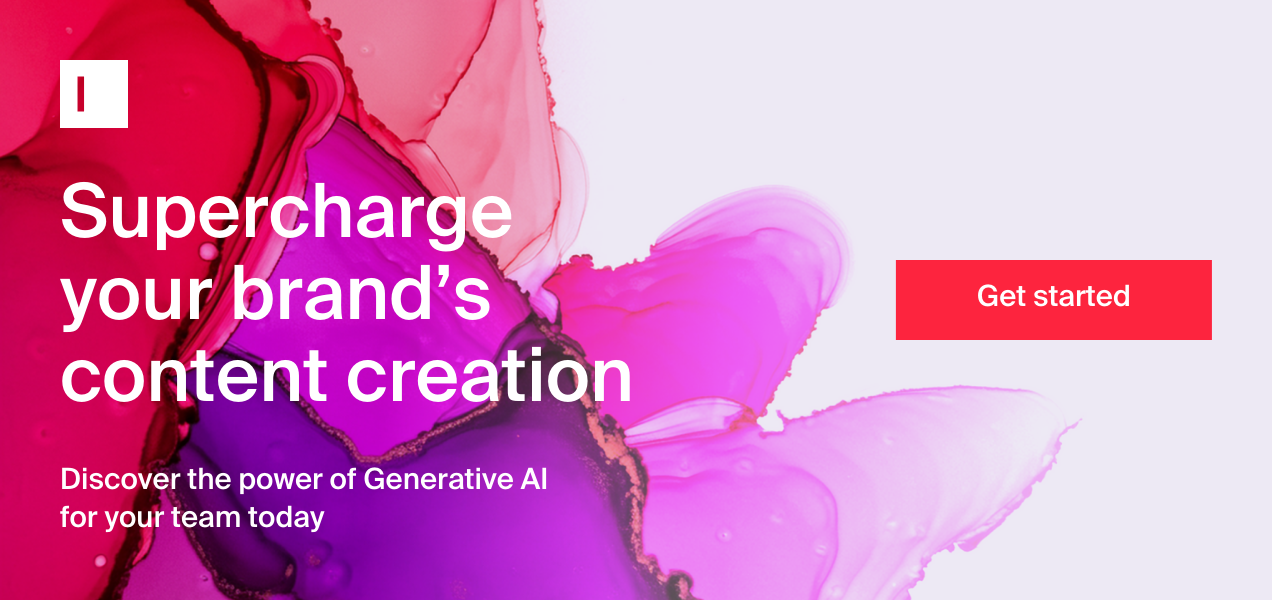
Share
Related articles

AI at Work
How to Use AI SEO Content Generator for Better Ranking Content

Akshita Sharma · Content Marketing Associate
April 3rd, 2025 · 11 min read
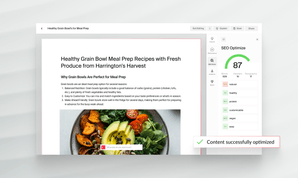
Product
Introducing a New End-to-End SEO Workflow That Scales High-Quality, User-Centric Content Production 6x Faster

Saachi Shah · Product Manager
January 29th, 2025 · 7 min read

AI at Work
AI for SEO - 7 Powerful Tips to Integrate AI Into SEO Content Writing

Neelam Goswami · Content Marketing Associate
November 28th, 2024 · 12 min read